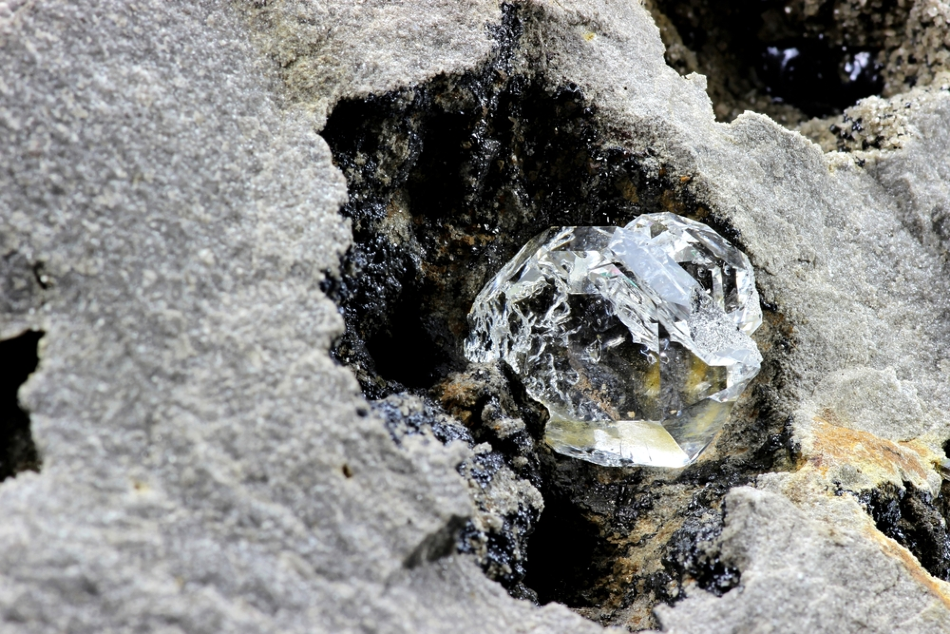
Image Credit: Bjoern Wylezich/Shutterstock.com
Diamond is a material known by everyone for its beauty and value as a jewel. Outside of jewelry, diamond has a different value due to its hardness and is often used on drill-tips and in other mechanical tooling. However, recent research is showing that diamonds can also be bent – but only at the nanoscale.
Diamond has a Mohs scale hardness of 10, making it one of the hardest materials known. This hardness is born out of diamond’s strong sp3 hybridized covalent bonds, as well as the well-ordered tetrahedral geometries they are arranged in.
This hardness also makes diamonds brittle, meaning that they are more likely to fracture instead of showing flexibility when bent. In recent years, however, research is showing that even though a diamond is brittle at the macroscale, at the nanoscale diamonds (i.e. nanodiamonds) have different properties, and can be flexible.
Diamond Needles
Research from Banerjee et al in 2018 described nanodiamond needles, which can be significantly bent and stretched. These needles, 100-300 nm in size, were found to have a tensile strength strain of up to 9%. They could be elongated by up to 300 nm and still show fully reversible elastic properties.
These properties were attributed to the occurrence of defects in nanodiamonds. Even though diamonds at the macroscale have defects, the lattice volume is much bigger and can accommodate these without changing the diamond’s mechanical properties. It’s thought that the size of the nanodiamond needles is the most important parameter, although the smoother surface of nanodiamonds is thought to play a part as well.
It is also thought that the flexing of a diamond at the nanoscale induces a quantum mechanical effect, offering insights into the quantum properties of diamond. At strains beyond 1%, the bandgap energy changes, leading to changes in the chemical and physical properties of the nanodiamond.
These lattice deformations could significantly change the optical and electronic properties of nanodiamonds, making them potentially suitable for optoelectronic devices.
These discoveries have also led to the understanding that diamond, at all scales, could be more durable than expected.
It also shows that any material, no matter how brittle, could become flexible if its structure is manipulated at the nanoscale, or if they are fabricated at the nanoscale instead of at the macroscale.
Bending diamond has opened possibilities for investigating how other typically brittle materials behave at the nanoscale.
Diamond Pillars
Recent research by Aharonovich et al followed on from what has been discovered about the properties of a diamond at the nanoscale. In this research, the nanodiamond needles were much smaller than previous research, at only 20 nm in height, and referred to as nanodiamond pillars. While other research is centered around the borderline between micro and nano, these were firmly within the nano realm.
The researchers found that these nanodiamond pillars could be bent up to 90 degrees without fracturing – a very high degree of plastic deformation.
The ability to bend at such extremes without fracturing was attributed to an ordered carbon allotrope emerging, known as O8-Carbon, in the regions where mechanical deformation takes place. This carbon allotrope forms under the high mechanical strain of the sp3 bonds breaking “like a zipper” and restructuring themselves into a (001) orientation. Because large regions are transformed in this manner, the nanodiamond pillars were found to exhibit unique mechanical properties.
The emergence of new properties and property manipulation methods means that nanodiamonds, and potentially other materials, could be adapted for a wider range of applications.
Conclusion
The ability to bend diamond at the nanoscale not only offers better insights into its different properties but also provides a method of exploring new applications of the material. For example, nanodiamond’s flexibility could make it suitable for intracellular delivery and mechanical loading applications.
References and Further Reading
Chandler D. (2018) How to bend and stretch a diamond Available at: http://news.mit.edu/2018/bend-stretch-diamond-ultrafine-needles-0419 (Accessed on 27 February 2020)
Johnson D. (2018) How to Bend Diamonds Available at: https://spectrum.ieee.org/nanoclast/semiconductors/materials/flexible-nanodiamonds-bend-into-new-band-gap-structures (Accessed on 27 February 2020)
University of Technology, Sydney (2020) Being diamond is possible at the nanoscale Available at: https://phys.org/news/2020-02-diamond-nanoscale.html (Accessed on 27 February 2020)
Nield D. (2020) Scientists Unlock a New Method That Can Actually Bend Diamonds Available at: https://www.sciencealert.com/super-hard-diamonds-can-be-bent-and-flexed-at-the-nanoscale (Accessed on 27 February 2020)
“Ultralarge elastic deformation of nanoscale diamond”- Banerjee A. et al, Science, 2018, DOI: 10.1126/science.aar4165
“Plastic Deformation of Single‐Crystal Diamond Nanopillars”- Aharonovich I. et al, Advanced Materials, 2020, DOI: 10.1002/adma.201906458
Disclaimer: The views expressed here are those of the author expressed in their private capacity and do not necessarily represent the views of AZoM.com Limited T/A AZoNetwork the owner and operator of this website. This disclaimer forms part of the Terms and conditions of use of this website.